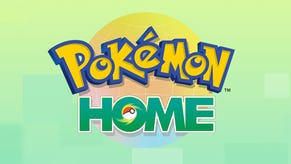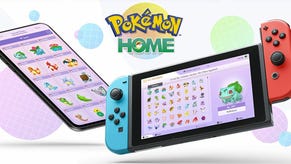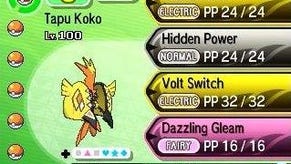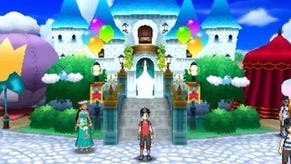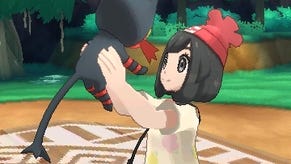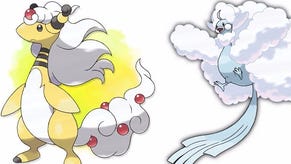Sun and Moon refresh the Pok¨Śmon ritual
Holiday special.
There's a ritual to starting a new Pokémon game, a formula of events which the force of nostalgia has set into stone. Leaving your childhood home, you pick your first Pokémon and battle your childhood rival, heading down Route 1 and into your first patch of long grass with an empty Pokédex but a pocket full of Pokéballs.
Sun and Moon do more to refresh this ritual than any other pair of Pokémon games before them, all without ever disrupting the warm feeling of familiarity which the series - 20 years on - still manages to stir. The Hawaiian setting of Alola not only provides a sun-soaked step-change more different than any other game in the series, it also serves as a timely opportunity to reinvigorate Pokémon's well-worn gameplay and story.
The opening two hours of Sun and Moon evoke memories of games past, but also of Saturday mornings spent watching the Pokémon anime. Nowhere is this more evident than in the games' extended introduction sequence which is by far the most visual I've seen in the series to date. Without spoiling the story, I'll just say it involves a certain character who it has already become clear will play a big part of the game's overall plot. (Yes, Pokémon has a proper plot now.) It also kicks Sun and Moon's narrative into gear long before you choose your Starter Pokémon, while also setting out the games' stall for how accomplished the series now looks on Nintendo's handheld.
Visually, Sun and Moon are some of the best-looking 3DS games out there, and Alola is allowed to look better than any other Pokémon region before it, now rendered completely in 3D and shown off in dynamic camera angles that swoop around landmarks and zoom in on characters in battles. Back when Pokémon X and Y released I remember speaking to Pokémon boss Junichi Masuda about how the game series has become increasingly influenced by the Pokémon anime - noticeable especially in the cel-shaded sheen and design of recent games. It was about unifying the look of the Pokémon world, he told me, which many younger players had experienced for the first time in cartoon form.
I was reminded of this as I entered a battle for the first time, and I watched each Pokémon trainer reach to their belts and throw their respective Pokéballs into the fray - the animation is identical. Battles are now fully 3D too, with backgrounds often replicated to great effect, making the transition into turn-based combat feel more seamless. Within battles themselves, the whole process continues to feel smoother and faster, and winning now provides a rather smug pan around the agonised face of your opponent.
Battles can then conclude with a post-fight mini-game similar to X and Y's Poké Amie feature where, charmingly, you can give your weary Pokémon some aftercare. Your Fire-type Litten is wet? You can blow dry its fur with a virtual hairdryer to raise your bond. Your Rowlet is in need of a pick-me-up? All critters can now be tempted with a Pokémon jelly bean. The end-game for all this pampering is likely Sun and Moon's new Z-Move mechanic, which provides each creature with a devastating new battle move. Sadly, this was discussed but not available to try in the games' opening two hours.
Right from the off, however, it is clear Alola is a breath of fresh air for the series. Pokémon games have strayed beyond the borders of its fictional Japan's Kanto, Johto and Hoenn many times, but neither Black and White's take on New York or X and Y's version of Paris so comfortably uprooted the Pokémon formula to somewhere immediately so different. And sure, there are remixed Pokémon tunes being strummed on ukes, tie-dyed skies, floral shirts and sandals as far as the eye can see. The changes are more than skin deep. The location is allowed to disrupt such set-in-stone mechanics such as the series' eight gym template, for example, replaced instead by an island hopping tour of the Alola region to meet elders and battling, yes, but also earn respect through miniature dungeon-like island trials.

The various new and redesigned Pokémon species also benefit from Sun and Moon's cohesive theme, from fresher takes on old tropes such as the usual starting area bird and bug variants to standouts such as the frankly intimidating death-gripping Bewear and the Trump toupée-d Gumshoos. Better yet, though, are the new looks for Kanto Pokémon which refresh each species far better than X and Y's Mega Evolution mechanic - and it's safe to assume there are yet more to be discovered than have so far been revealed.
Much of Sun and Moon's opening section is spent reassuring players of Pokémon's core mechanics - battling, healing, capturing new creatures, training, using items and equipping berries. It also leads you to Alola's largest city and your first encounters with the region's comically villainous Team Skull - tracksuited hip hop posers who spend the entire time bobbing up and down and throwing shapes to some unheard gangsta tune. This part of the plot doesn't seem to have moved the series' villain archetypes on from the usual Team Rocket clones we've seen over the past two decades, and continues to use them for humour. (Team Skull goons set upon your character in a berry grove and upon entering battle are heard to yell "Let's get figgy with it").
Two hours in and I'm impressed by how far Sun and Moon have been allowed to push Pokémon's formula beyond simply adding some new species to capture and gyms to beat. (It's worth noting that while Pokémon Sun and Moon's demo, available to try from 18th October, offers a slightly different offering, the experience should also illuminate what Alola has to offer). In the autumn of the 3DS' days, with new Nintendo hardware around the corner, it feels like Sun and Moon will be a fresh warm breeze to blow the dust off your handheld once more.



